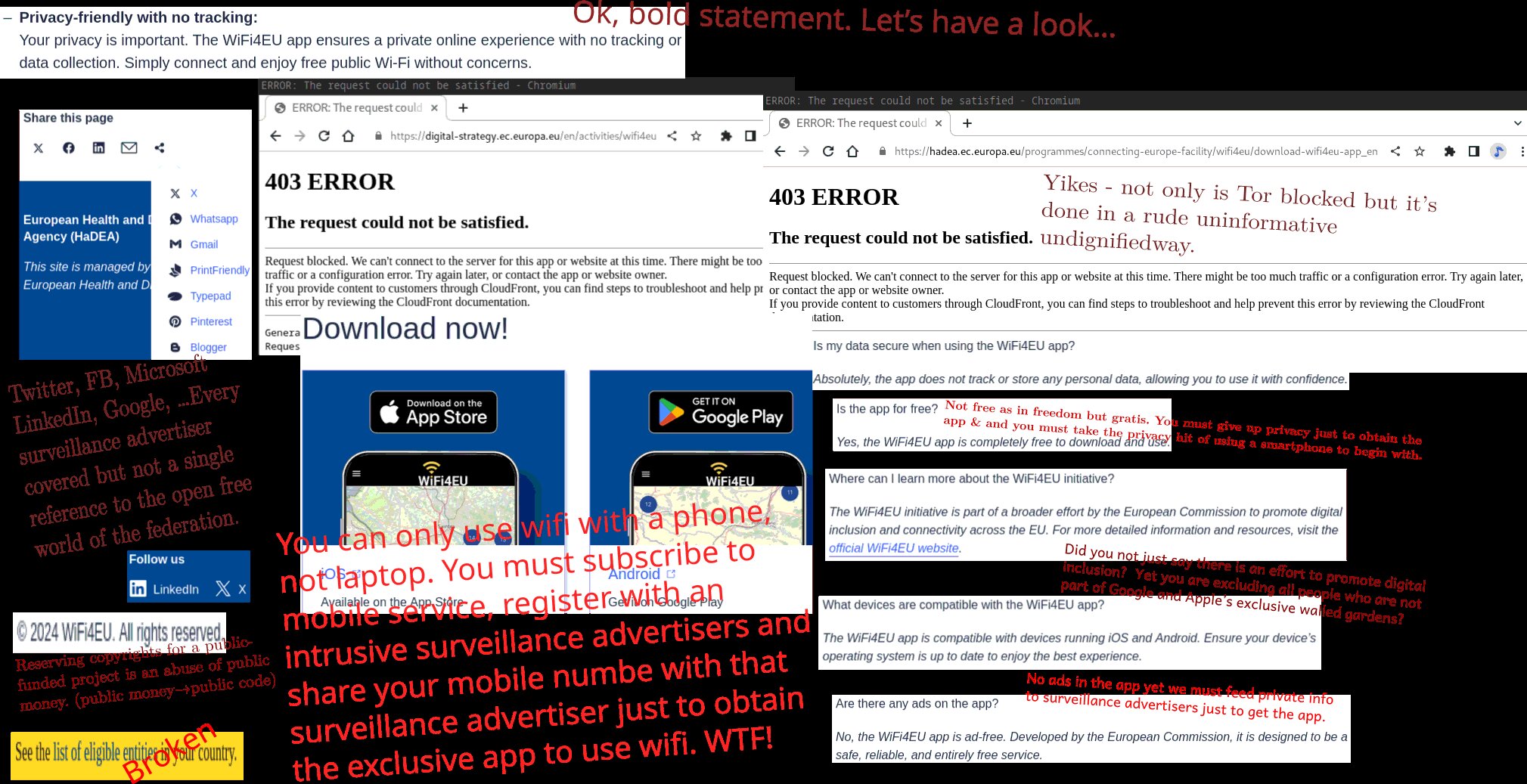The EU has implemented a free public wi-fi infrastructure and is pitching this service to various public buildings, including public libraries. This “Wifi4EU” project is limited to people with smartphones, and only those that are running iOS or Android OS. The app needed to connect to the network is closed-source and exclusively available in the walled gardens of Google and Apple. The network is inaccessible without the special app.
AFAICT, these are the excluded demographics of people:
- people with laptops
- people who do not have or carry a smartphone
- people with old non-updatable smartphones (all iOS & AOS devices are designed for obsolescence)
- people with cheap Chinese phones that exclude Google Playstore (which requires licensing with Google that some vendors do not subscribe to)
- people with deGoogled phones
- people with no Google account (i.e. those without the mobile phone number needed to register with Google)
- people who refuse to install and execute non-free closed-source software, and those on FOSS platforms that do not support such software
My concern is that when a public library decides to deploy Wifi4EU, they will discontinue their current wi-fi service, which does not require a special app and which is generally open to more demographics of people. Note that it’s a bit of a shit-show already because some current library wi-fi services already exclude people who cannot overcome the shitty captive portal + SMS verification design. Wifi4EU is even more exclusive.



wtf, a wifi that need an app to connect? Like fuck standards !
I’m not sure how it works but it may still conform to standards (just not conventional norms). E.g. consider eduroam which is common in EU schools. You need a special app for eduroam but it’s possibly combining various authentication standards with wi-fi standards. Before using eduroam I skimmed through all 1000+ SLOC of the bash script before deciding to trust it. I was revolted that I had to inspect all that code just to safely connect to campus wi-fi with confidence.
That said, I have no idea how wifi4eu works. It could be similar to eduroam and perhaps a FOSS app will eventually emerge. But until then, all we get is an all-rights-reserved copyrighted black box and no specs (AFAIK). So yes, it’s a shit show of exclusivity and privacy surrender nonetheless.